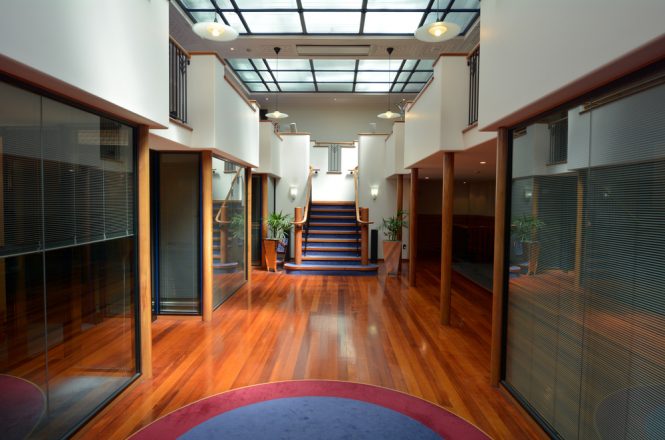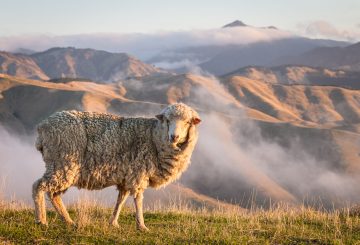Thiếu kỹ năng gắn kết và gián đoạn chuỗi cung ứng đang diễn ra là một trong những thách thức chính gây ra đau đầu cho giám đốc công ty.
Viện Giám đốc (IoD) và cuộc khảo sát hàng năm của Ngân hàng ASB cho thấy gần 60 phần trăm các thành viên của nó vẫn đang đối phó với những tác động tiêu cực của đại dịch đối với hiệu suất của tổ chức của họ.
Mối quan tâm chính của các giám đốc là thiếu công nhân lành nghề, trở nên tồi tệ hơn bởi biên giới khép kín, với 57% người được hỏi nói rằng họ cảm thấy đó là trở ngại lớn nhất đối với hoạt động kinh tế của đất nước, so với 32 phần trăm trong cuộc khảo sát năm ngoái.
Giám đốc điều hành IoD Kirsten Patterson cho biết: “Chúng ta hiện đang thấy hiệu ứng quả cầu tuyết của Covid-19 đối với lực lượng lao động trên nhiều lĩnh vực”.
“Đối với các tổ chức, một số thách thức tài chính bởi đại dịch, bây giờ dường như có một lực lượng lao động biến động, tăng kỳ vọng lương và một khoảng cách cho một số kỹ năng chính cần thiết.”
Cô dự kiến các hội đồng quản trị sẽ phải chiến đấu để giữ chân các nhân viên chủ chốt trong những năm tới, khi một số công ty phải vật lộn với “sự từ chức tuyệt vời”, đó là xu hướng của người lao động đánh giá lại các ưu tiên của họ và tìm cách chuyển đổi việc làm hoặc nghề nghiệp.
“Điều này có nghĩa là các tổ chức sẽ cần xem xét các cách tiếp cận của họ đối với những thứ như cân bằng giữa công việc và cuộc sống, văn hóa công việc tích cực và phần thưởng và công nhận trong nỗ lực thu hút và giữ chân tài năng chủ chốt.”
Sự gián đoạn chuỗi cung ứng, đóng cửa biên giới đang diễn ra và hiệu quả của vắc-xin cũng là những vấn đề nổi bật đối với các thành viên hội đồng quản trị.
Tỷ lệ giám đốc nghĩ rằng nền kinh tế sẽ xấu đi trong năm tới được cải thiện 12 điểm, với 51% dự báo sự suy giảm.
Tuy nhiên, các thành viên hội đồng quản trị đã lạc quan hơn về tương lai của tổ chức của họ, với 54phần trăm mong đợi vận may của họ sẽ được cải thiện, tăng từ 50 phần trăm một năm trước.
Nhà kinh tế trưởng ASB Nick Tuffley cho biết nền kinh tế dự kiến sẽ tăng 4% trở lên trong năm 2022 khi nó phục hồi từ các đợt khóa cửa năm nay.
“Theo hệ thống đèn giao thông, các tổ chức New Zealand có thể mong đợi một môi trường sẽ ổn định hơn, với những hạn chế cực đoan ít bị hạn chế được sử dụng trong năm 2020 và 2021 để chống lại Covid-19.”
Việc thư giãn các hạn chế biên giới cũng sẽ cho phép nhiều tài năng hơn vào đất nước, ông nói.
Cuộc khảo sát cũng cho thấy niềm tin ngày càng tăng rằng các công ty nên tham gia vào các vấn đề xã hội.
Một nửa số người được hỏi nghĩ rằng giám đốc điều hành của họ nên lên tiếng về các vấn đề xã hội, tăng từ 28 phần trăm một năm trước, và tỷ lệ cao hơn một chút tin rằng hội đồng quản trị cũng nên được nhìn thấy để bình luận.
Patterson nói: “Mọi người ngày càng tìm kiếm nhiều giám đốc để đẩy mạnh và thể hiện sự lãnh đạo về một loạt các vấn đề, về mọi thứ từ biến đổi khí hậu đến sự đa dạng trong phòng họp.
“Khi đối mặt với một cuộc khủng hoảng, chúng tôi biết rằng thường các bên liên quan của bạn sẽ được tha thứ và hỗ trợ hơn nếu bạn có giá trị âm thanh – và bạn sống bởi họ.”





























































